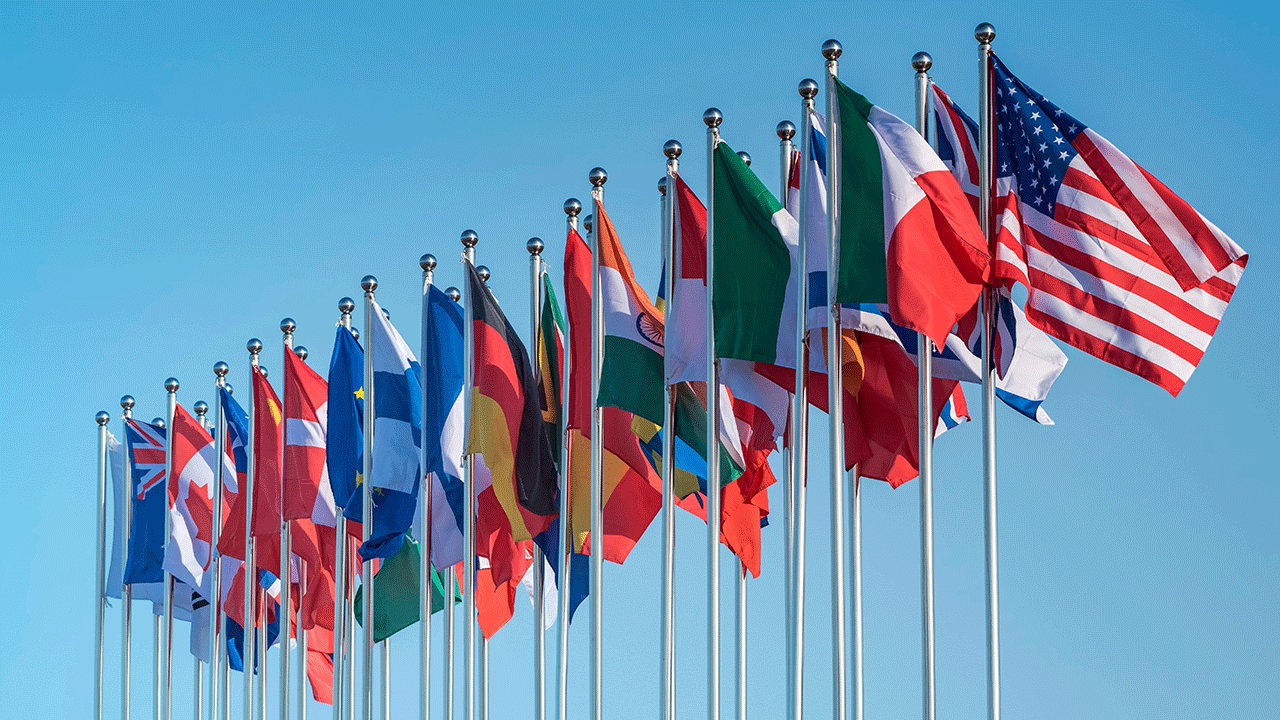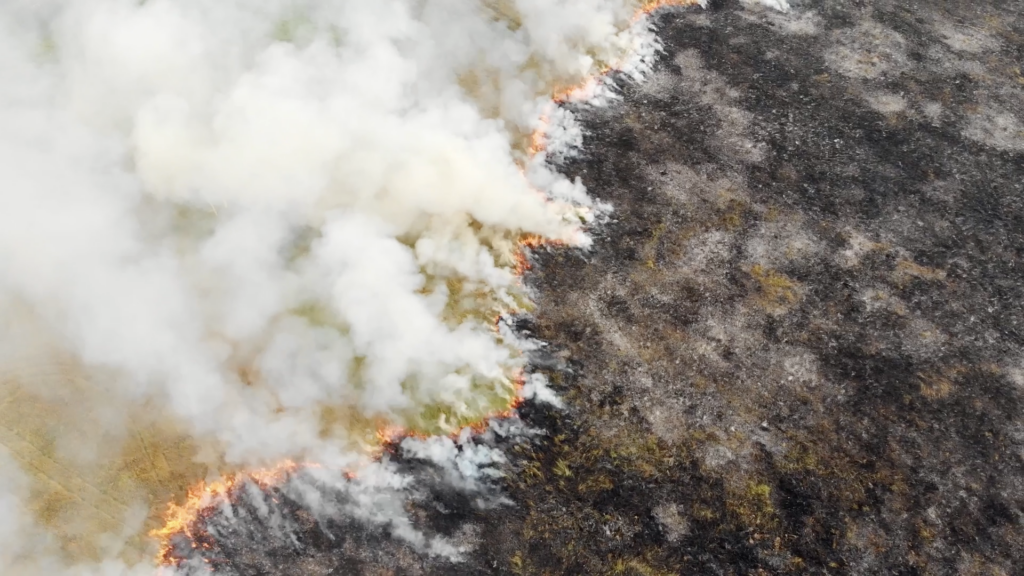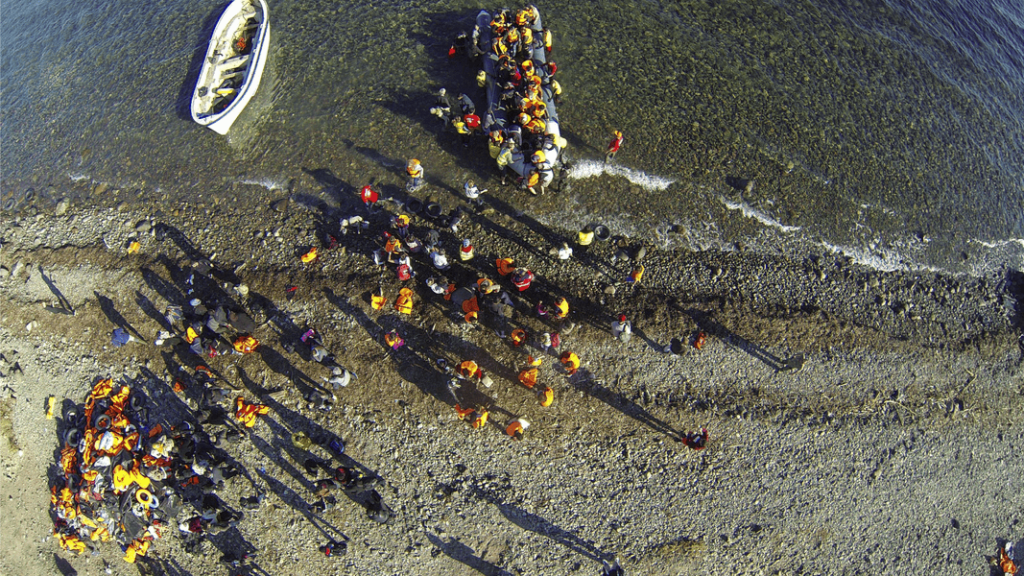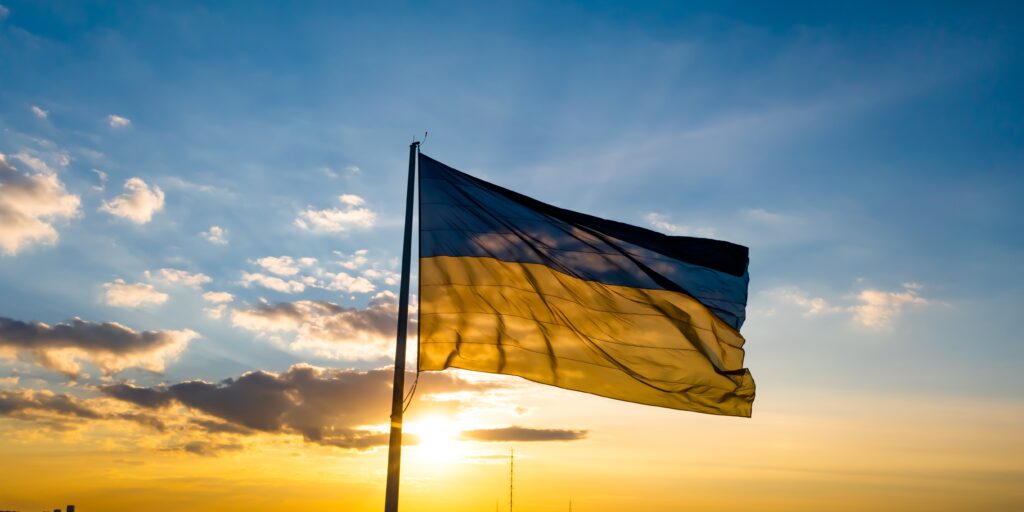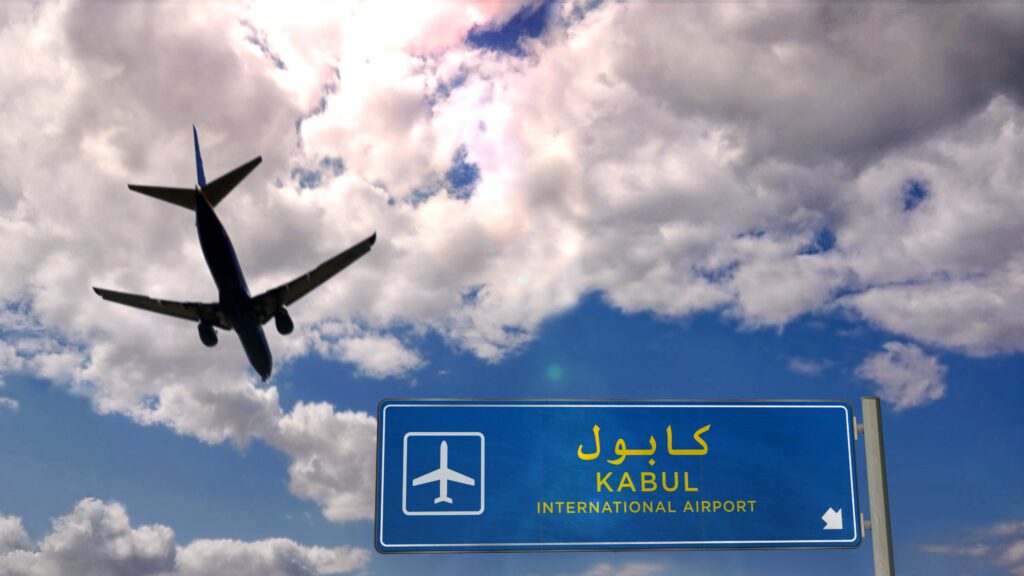In November 2023, Dataminr announced that Ushahidi was selected to be one of its AI for Good partners—NGOs multilateral organizations selected to work with Dataminr’s AI scientists to turn their ideas for humanitarian and development projects into tailored AI solutions.
In the following episode of Somewhere on Earth: The Global Technical Podcast, Ushahidi Executive Director Angela Oduor Lungati and Dataminr VP of Social Good and Nonprofit Partnerships Jessie End join podcast host Gareth Mitchell for a conversation on the organizations’ partnership, what it means for Ushahidi going forward and the impact of tech on humanitarian efforts.
For the full interview, listen to the podcast below or read the transcript that follows, which has been edited for clarity and length.
What is it that Dataminr does that is useful to its customers or partners like Ushahidi?
Jessie of Dataminr
Across our business, no matter whom we’re serving, when we look at our alerting and why it’s valuable, it really comes down to three things: speed, scope and depth of alerting. When it comes to speed, having access to real-time information is critical in helping organizations stay ahead of crises and threats, so that they can better protect their people and assets in the fields.
In the case of humanitarian response, there are beneficiaries as well. Think about things like duty of care. When a disaster strikes, nonprofits have to react quickly and thoughtfully. They have a lot at stake, and the speed of that alerting is really critical.
For example, we work with a nonprofit organization that doesn’t actually have boots on the ground. They work through smaller, local organizations in the countries that they serve, providing medical aid in crisis settings.
When Russia first invaded Ukraine, Ukrainian refugees were crossing the border into Poland and the nonprofit’s very first signal that this was happening—and to the degree that this was happening—was through the Polish press. It was actually an article that they found via a Dataminr alert.
We’re not looking for trends, sentiments, or things about people’s personal lives. Our AI platform is trained to identify when an event is happening.
Jessie End, VP of Social Good and Nonprofit Partnerships at Dataminr
Through that one article, the nonprofit organization was able to essentially geocode the border checkpoints and refugee reception centers over a week prior to when that same information was being published by the United Nations Office for the Coordination of Humanitarian Affairs, which most people know as OCHA.
That speed, that ability to get that local data source ahead of time, more than a week before the official stats, was really critical to the nonprofit and allowed it to position aid for the refugees entering Poland.
Ushahidi is best known for its crowdsourcing and mapping tool, but it’s branched out quite a lot, is that right?
Angela of Ushahidi
I would describe us as a global non-profit technology organization that’s empowering people through citizen-generated data—to think about how to develop solutions that will strengthen their communities or help improve them in one way or the other. We spent some time really thinking about what our purpose is, reflecting on where we’ve come from and where we’re going.
We’ve kind of summarized that into what we are here to do, which is to make sure that people everywhere can easily gather data and generate the insights they need to help them tackle the issues that matter the most to them. We want people who are rarely heard by decision makers, these are disenfranchised communities, to share the data in ways that allow them to help each other or get the outcomes that they want.
We want decision makers to also have access to data and insight that helps them better support the communities that they are committed to serve, and that we’re also operating in a world where community-generated data sets turn into public good that can serve as a resource to improve society.
We’re trying to raise the voices of people who tend to be left out of critical conversations, the world’s most disenfranchised communities.
Angela Oduor Lungati, Executive Director at Ushahidi
I think that citizen perspective sometimes tends to get lost, and yet it adds so much flavor and a better understanding of some of the pressing issues that we are facing today. And so really, just trying to make sure that is still at the heart of different conversations that we are working in.
There’s still a lot of focus on raising the voices of those disenfranchised communities, but also thinking about how those raised voices then transform into insights that are valuable for people to then make decisions out of them.
When trying to detect potential risks during elections, how does Ushahidi evaluate the information shared by people on the ground?
Angela of Ushahidi
That’s a very good question. It’s one that comes up every time we talk to anyone who’s looking to use a platform to crowdsource. The risk of bias has always been there, but we’ve put in several checks and balances to try and tackle that.
From a technological perspective, nothing goes live on the map unless somebody’s reviewed it to make sure that it actually aligns. In the case of the 2022 [Kenyan] elections, we purposely shared some of the things that were tagged as misinformation, just to show people the extent of the pervasiveness of misinformation. For example, say, the 70% at this point versus 30%. I think that’s still valuable, but at bare minimum, it’s important to make sure there are ways that you can tag the information as to:
- What is credible
- What isn’t credible
- What is a public opinion versus what is fact
From a non-technological perspective, leveraging existing partnerships. You know, working with groups like the Baraza Media Lab and the Fumbua team, to help us really corroborate some of the information that’s coming through. That also pairs up with the technological aspect of how we’re flagging things, because at the end of the day, we are a small nonprofit organization that’s focusing on building the infrastructure.
But the people on the ground and some civil society organizations already have trust established and know a whole lot more; that just makes it a much more powerful engagement.
What brings Ushahidi and Dataminr together? What does your collaboration mean?
Jessie of Dataminr
Let me give you a little context on how this partnership came to be. Shortly after I joined Dataminr, we were starting to hear this term polycrisis used, bandied about. For those listeners who might not be familiar with the term, it refers to the simultaneous occurrence of multiple catastrophic events, and more specifically, one where individual crises become increasingly entangled, and the resulting impact is larger than the sum of its parts.
Think about climate change, conflict, food insecurity, migration, threats to public health and threats to human rights. I think when we were faced with this growing polycrisis, I think we recognized that the demands on humanitarian and social good organizations on that space were only going to be increasing. We were looking for additional ways we could actually relieve some of that burden, beyond our alerting.
When we saw the RFP by Dataminr open up, it was such a fantastic opportunity for us to think about how we could ease the pain of manual data processing on our platform.
Angela Oduor Lungati, Executive Director at Ushahidi
And so in 2023, we launched something, our AI for Good program, which actually sits under the umbrella of our Social Innovation Lab, and we ran a pilot program with UN Human Rights. Before that, but also in 2023, we launched our official AI for Good cohort. We released a public RFP, essentially inviting social impact organizations to share their ideas on how AI could make a profound and game-changing impact on the work that they do.
Ushahidi was one of the applicants and then one of the organizations we selected to work with. I’ll let Angie share a little bit more on what the proposal was and what we’ve been working on.
Angela of Ushahidi
Some of the election monitoring work tends to come to life. It tends to be a massive effort of pulling in a lot of different stakeholders, volunteers to come together, to help us process the incoming data, and a very intricate workflow, like how we identify what’s coming in from different media sources, and then putting it to another layer, then geolocating it and translating it. Then, going to a final level of review, publish and verify, while also figuring out how to then escalate to different partners for response.
When you’re dealing with hundreds or thousands of data sets, it means that you need to have hundreds of volunteers, probably spread out across different time zones, to make sure that there is a continuous cycle of data being processed.
And while we’ve tweaked the workflow over the years, trying to reduce the amount of time it takes [to assist] somebody on the ground who sends a message and says, “I’m in trouble,” or, “I need help.” The point where it gets responded to, we recognize that there have been inefficiencies there.
When we saw the RFP by Dataminr open up, it was such a fantastic opportunity for us to think about how we could ease the pain of manual data processing on our platform, to help anyone who’s using it to advocate for change or collect data—to focus on telling the story rather, than focusing on the manual processing of data. So we applied. We got it, and that was amazing.
Can you speak to how Ushahidi addresses barriers that might prevent you from capturing people’s information?
Angela of Ushahidi
It’s something that we’ve factored into the design of how the platform works from the very beginning. We recognize that we’re trying to raise the voices of people who tend to be left out of critical conversations, the world’s most disenfranchised communities.
And that means that we have to design the tools in ways that meet them where they are. And the way that we have done that, or at least did it from the very beginning, was start with the most ubiquitous tool that people have access to, the mobile phone. My mother has it, my grandmother has it, my grandfather and father as well.
It’s the lowest means of entry or the lowest means of being able to engage, allowing people to share information. But of course, just to try and widen that base, people are also able to share reports via smartphone applications. They’re also able to do that via the web, via email and via X, currently. And we’ve recently also been integrating WhatsApp and USSD as a lower-cost option to SMS.
So we’re also constantly thinking about the fact that the way people are showing up is different, and it’s constantly evolving. So how do we consistently make sure that we’re meeting them where they are, so that we are lowering those barriers of interaction, at least from a psychological perspective.
Second thing, of course, is making sure that they know about the existence of a tool that allows them to share. So the interesting thing is that, when you talk to many people, they probably don’t know about Ushahidi itself.
They’ll know that, “I sent an SMS to this short code number,” because partner-wide, could be the Constitution Reform and Education Consortium, Baraza Media Lab told them, “If you share a message here, something different is going to happen.” So most of the time, the respondents, the people on the ground will not know of Ushahidi. They will know the partner that is using Ushahidi to help raise their voice.
Does Dataminr’s use of public data have an effect on individuals’ data privacy?
Jessie of Dataminr
No, but I think the question is a really important one to frame, especially in the context of the groups that we work with. Humanitarian response, there’s plenty of sensitive data there. The thing about Dataminr is that we are, at our heart, about event detection. So we’re not looking for trends, sentiments, or things about people’s personal lives.
Our AI platform is trained to identify when an event is happening. All that other information that might be in there, our AI sees as irrelevant. So it would never show up in our platform, because it is beyond the scope of what our platform is designed to do.
Obviously, the added benefit is that we don’t have to worry about those privacy things in the same way. That said, we are a tech company, and we are compliant with all the different required laws and regulations that are out there. We believe they are important protections to be in place, so we comply with all those. And I will also say, from what I’ve heard from our partners, we go above and beyond that. But the biggest thing that we have going for us is what our AI platform is designed to do.
Where, for you, is the social good around AI?
Jessie of Dataminr
For me, it’s really always about the work that our partners are doing. So whether that’s one of our AI for Good partners, like Ushahidi—or UN Human Rights, which uses our First Alert product for the public sector to maintain real-time situational awareness of attacks on human rights defenders—it is about the work that our partners do.
We’re actually very careful in how we select our social good partners, and our AI platform, which powers our First Alert product I just mentioned, is essentially just a tool to enable them to do their jobs better and more effectively, to keep people safe. So the social impact in what we do really is just in enabling partners that are doing great work.
What’s an example of how you’re bringing Ushahidi’s mission to life? What does it mean to the communities you serve?
Angela of Ushahidi
I’ll first speak to how the work, the partnership with Dataminr, is really supporting and helping us. We’ve managed to come up with three artificial intelligence models through this partnership. One supports an automatic classification of data, another helps us with automatic geolocation, and the other supports automatic translation of data, which is already proving to help us process a lot of information much faster. We haven’t published any reports around this yet, but we’re actively using it right now to stay abreast, in real time, of political events and activities in Kenya.
But to your point around how we’re trying to achieve our lofty goals, I think there’s plenty, so many examples that I can use around how being able to raise voices has been extremely valuable. And how it has helped to effect some level of change, whether it’s in Nigeria back in the day, and how the tool really helped to increase voter turnout, because people were engaged, or using it in a local community in Tana River, trying to understand energy consumption patterns within a local community, in an area that tends to be ravaged by climate change.
Or being able to surface the fact that nursery tree farmers have been getting taxed more than people who are cutting down trees to sell charcoal. And that is now being tabled in the local government, for them to figure out how to shift this and potentially lead to a different conversation around how we can address climate change in the area.
Or the platform being used to raise the voices of women who are being harassed on the streets of Cairo in Egypt and shifting the conversation from, “Is this happening or not?” into, “How do we change this narrative? How do we shift behavior and start to have conversations around what needs to change?”

